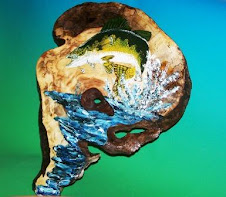In the last blog we looked at the first two principles of the model. Today we will continue with the next five principles of the model.
3 Democratic Rule of Law
Today all users of our wild resources are governed by the democratic rule of law. All stakeholders in our wild resources have access to those resources within a framework of laws, rules, and ethics. Imagine how things would look today if the decision had been made to follow the European model where a select and elite few made the rules; often to the detriment of the public at large.
4 Hunting Opportunity For All
One option available to our forefathers was to ban hunting on any scale to allow wildlife to re-establish naturally. That tact would have ensured the endangerment of many species that we all enjoy today. Without the billions of dollars pumped into conservation efforts by hunters and fishermen wildlife conservation in North America would collapse.
Indeed it is this tenant that has encourages wholesale participation and financial contributions to wildlife management throughout North America.
5 Non-frivolous Use
Although somewhat subjectively interpreted in was the intent of the model to define non-frivolous use of wildlife as anything other than harvesting for food or fur, or for self-defense or protection of property. This ensured that wild animals could not be harvested on a speculative, for-profit basis by market hunters and that migratory birds could not be killed for a handful of feathers to festoon women’s hats.
6 International Resources
Wildlife doesn’t recognize borders: state, provincial, or national borders simply don’t exist in the world of wildlife. Those that developed the model realized that developing conservation concepts and practices in one region or country would have little impact once wildlife crossed a border into another jurisdiction. This understanding formed the basis of legislation like the Migratory Bird Protection Act of 1916. Without this international legislation many species of waterfowl would likely now be extinct.
7 Scientific Management
Fish and wildlife ministries throughout North America follow a methodology for wildlife and habitat management based on scientific research. This eliminates the potential for resources to be guided (or misguided) by emotion, rhetoric, and private agenda. Management of resources is, for the most part, objective and decisions made based on scientific study and evaluation.
This series will be continued and is proudly brought to you by www.distinctnorthernart.com . Visit us and browse our wide variety of original wildlife art and etched glass wildlife mirrors.
Southern Ontario Whitetailed Deer Primer
12 years ago
.jpg)



.jpg)
No comments:
Post a Comment
Like it? Don't like it? Have another opinion? We value your comments.